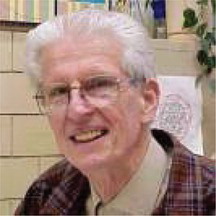
John Corbett most recently has been described as a fisherman of great renown, alluding to his great talent in discovering new unprecedented structures and compounds.[ Citation 1 ] He was a scientist who unabashedly professed a passion for new structures and compounds; a scientist who was most excited with the discovery of a new compound or structure that had not been planned for and could not have been imagined. His enthusiasm was contagious and he mentored a large number of students, postdocs, and faculty with the guiding principle of “first comes the synthesis.” With his death on September 2, 2013, solid state chemistry lost a great educator, researcher, advocate, and leader.
John Corbett successfully combined the art of complex solid state synthesis with a range of characterization tools, in particular X-ray diffraction and electronic calculation methods. There were the discoveries of the unexpected rare earth dihalides, such as PrI2, and Gd2Cl3, both of which continue to receive interest. When I joined John Corbett's research group as a postdoctoral fellow in 1985, he had recently discovered that many of the rare earth halide compounds were stabilized by light element interstitial impurities. This discovery led to a new, high-yield strategy for the synthesis of new rare earth halide clusters and complexes. He took a complicated and confusing set of rare earth halide compounds and worked out the full structural and bonding details, providing new insight and convenient synthetic techniques that are now commonplace in most synthetic inorganic solid state laboratories around the world. Together with parallel work on zirconium chemistry, he showed that there is a whole new world of interstitially stabilized cluster chemistry that bridges the solid state and solution community, providing a foundation for current research in transition metal cluster chemistry.[
Citation
2
] Another area that he contributed greatly to are Zintl clusters, with the isolation of the novel homo-and hetero-polyanions such as ,
,
, and
. This work has been an inspiration to scientists synthesizing new clusters from Zintl phases. He championed the discovery of new compounds and pushed the frontiers of bonding with research endeavors in the area of polar intermetallics.
John was born on March 23, 1926, in Yakima, Washington, USA. His graduate research at the University of Washington was in the area of fused salt studies and he earned his Ph.D. with a thesis entitled “Anhydrous Aluminum Halides and Mixed Halide Intermediates.” He joined the faculty at Iowa State University and the research staff of the Ames Laboratory of the U.S. Atomic Energy Commission in 1952 and rose through the ranks to Distinguished Professor of Chemistry in the College of Sciences and Humanities. He was selected to serve as Chairman of the Department of Chemistry in 1968-1973, after which he enthusiastically returned to research and teaching.[ Citation 3 ]
John received many professional awards for his research. They include the Frank H. Spedding Award for his for contributions to science and technology of the rare earth elements, the American Chemical Society Awards for Inorganic Chemistry, for Distinguished Service in Inorganic Chemistry, and the F. Albert Cotton Award for Synthetic Inorganic Chemistry. He was a fellow of the American Association for the Advancement of Science and a member of the U.S. National Academy of Sciences.
Although John did not pursue new compounds for the sake of technological improvements, many of the compounds that he discovered have been shown to have unique and important properties, such as for the lighting industry in the case of scandium halides, magnetoresistance in GdI2, and superconductivity in the rare earth halide carbides.
With the large number of new compounds and structures that he discovered, some will fulfill technological applications as properties are measured. John's enthusiasm for chemical research in the fields of inorganic and solid state chemistry has contributed significantly to the growth and development of solid state chemistry, in particular, as an academic discipline, and has also inspired numerous scientists to participate in this field. His exuberance for fundamental research and unanticipated discoveries will be greatly missed.
REFERENCES
- Kauzlarich , S. ; Meyer , G. ; Chen , L. European Journal of Inorganic Chemistry 2011 , 3819 – 3820 .
- Kauzarich , S. M. Journal of Alloys and Compounds 2006 , 418 , xiii – xiv .
- Franzen , H. F. ; Meyer , G. Journal of the Less Common Metals 1986 , 116 , vii – x .
